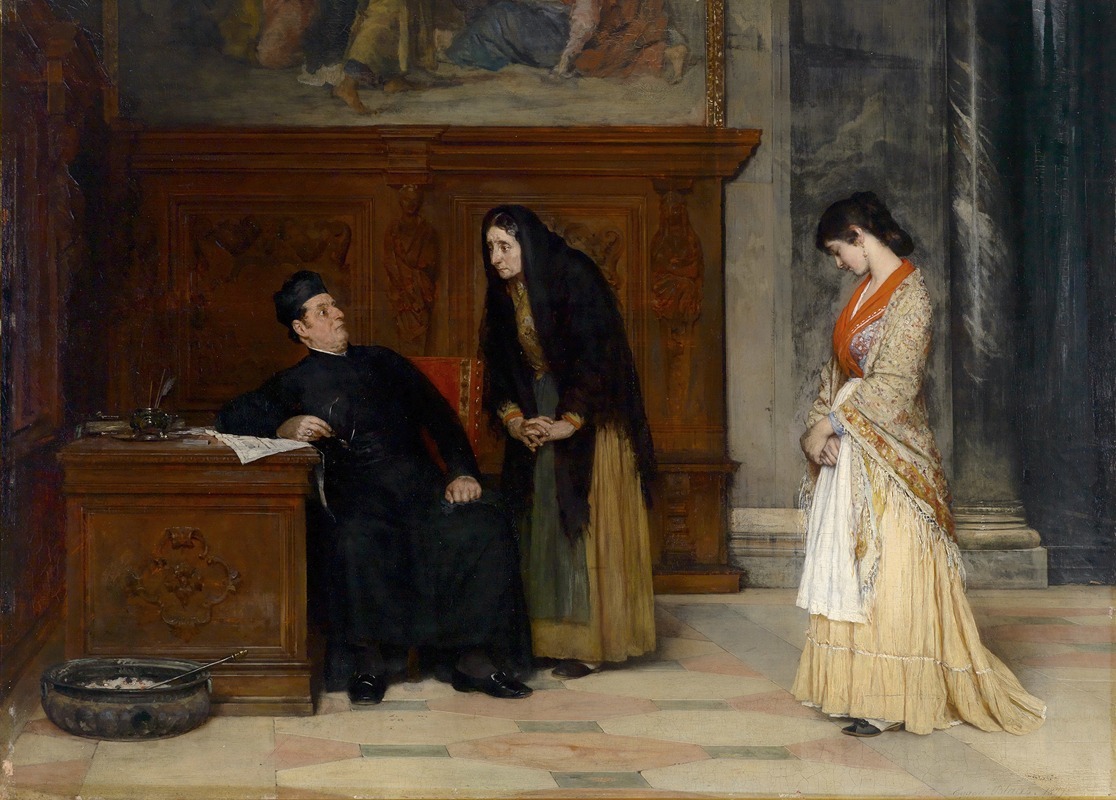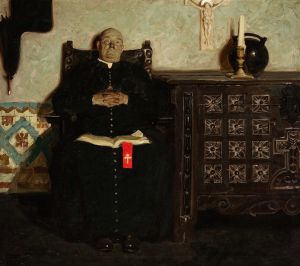
In the Sacristy
A hand-painted replica of Eugen von Blaas’s masterpiece In the Sacristy, meticulously crafted by professional artists to capture the true essence of the original. Each piece is created with museum-quality canvas and rare mineral pigments, carefully painted by experienced artists with delicate brushstrokes and rich, layered colors to perfectly recreate the texture of the original artwork. Unlike machine-printed reproductions, this hand-painted version brings the painting to life, infused with the artist’s emotions and skill in every stroke. Whether for personal collection or home decoration, it instantly elevates the artistic atmosphere of any space.
Eugen von Blaas, an Austrian painter known for his genre scenes and portraits, created the painting "In the Sacristy" during the late 19th or early 20th century. Von Blaas was renowned for his depictions of Venetian life, often capturing the everyday moments of people with a focus on detail and vibrant color. His works are characterized by their realism and the ability to convey the subtleties of human expression and interaction.
"In the Sacristy" is one of von Blaas's notable works, reflecting his interest in capturing intimate and candid moments. The sacristy, a room in a church where vestments and sacred objects are kept, serves as the setting for this painting. This choice of location suggests a focus on religious or ceremonial themes, which were common in von Blaas's oeuvre. The painting likely depicts figures engaged in activities related to church rituals, possibly preparing for a service or involved in religious duties.
Von Blaas's technique is evident in the meticulous attention to detail in the clothing and surroundings of the figures. His use of light and shadow adds depth to the scene, enhancing the realism for which he is celebrated. The composition typically includes a harmonious arrangement of figures, often with a central focus that draws the viewer's eye to the main action or interaction within the scene.
The artist's background and training significantly influenced his style. Born in 1843 in Albano Laziale, Italy, von Blaas was the son of Karl von Blaas, a respected history painter. Eugen studied at the Academy of Fine Arts in Vienna and later in Venice, where he developed a keen interest in the local culture and everyday life, which became a recurring theme in his work. His paintings often reflect the influence of both his academic training and his exposure to the vibrant Venetian environment.
"In the Sacristy" fits within von Blaas's broader body of work, which frequently explores themes of social interaction and cultural practices. His paintings are appreciated for their narrative quality, often telling a story or capturing a moment in time with clarity and emotion. Von Blaas's ability to portray the nuances of human expression and his skillful rendering of textures and materials contribute to the enduring appeal of his art.
Today, Eugen von Blaas's paintings, including "In the Sacristy," are held in various private collections and museums. They continue to be admired for their technical excellence and the insight they provide into the social and cultural life of the period. His work remains a testament to the rich artistic traditions of the 19th century and his unique ability to capture the essence of his subjects with warmth and precision.







